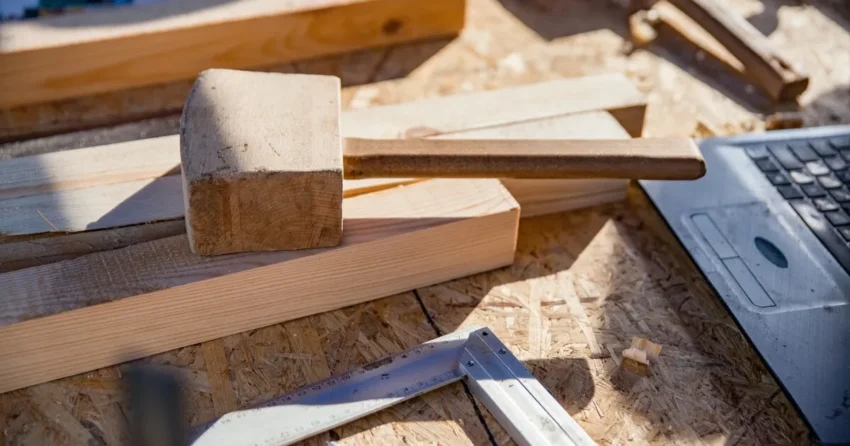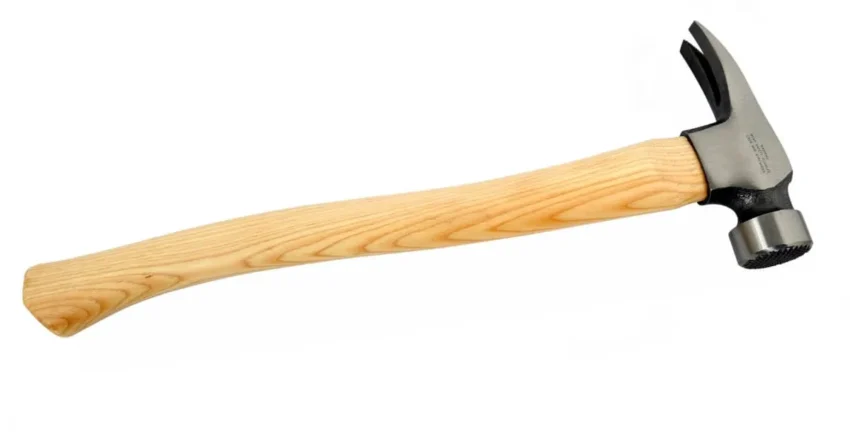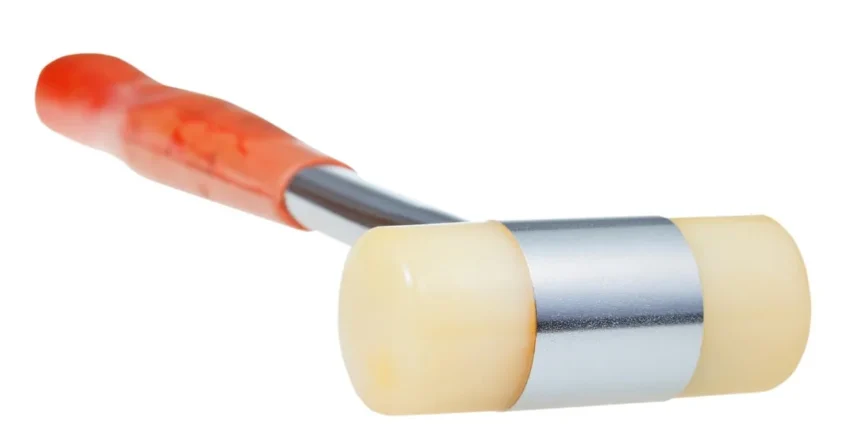In the field of carpentry, there’s one tool that’s almost always indispensable—the hammer. However, have you ever found yourself puzzled when choosing the right hammer for a specific project? Have you been unable to fully utilize a hammer’s potential because you’re not familiar with its specific uses and characteristics? Selecting the appropriate hammer not only enhances your work efficiency but also ensures safety and precision in your craftsmanship.
A hammer is a carpenter’s faithful ally, with different types serving various tasks. From intricate decorative work to rugged structural construction, each hammer is uniquely designed for its purpose. Understanding the characteristics, advantages, and proper use of these tools is crucial for the success of any carpentry project.
In this article, we will provide you with images of each different type of hammer along with the scenarios in which each is used. We’ll delve into the factors to consider when choosing a hammer and share practical tips for using them.
#1 Carpenter’s Hammer

The carpenter’s hammer is a fundamental tool for any carpentry project, designed for a multitude of construction and demolition tasks. It typically has a flat head for driving nails and a claw for pulling nails or dismantling wood. The balanced design of a carpenter’s hammer ensures stability and precision when striking.
Applications
The carpenter’s hammer is primarily used for driving or pulling out nails and dismantling or adjusting wooden components. Its versatility makes it an ideal choice for completing framing work, making furniture, or repairing wooden structures.
#2 Nail Hammer

Similar to the carpenter’s hammer, the nail hammer is usually smaller and more suited for delicate carpentry tasks. Its lighter head provides better control and precision, especially when working with small nails or performing detailed work.
Applications
The nail hammer is particularly useful in decorative carpentry projects, such as installing door frames, window frames, or finishing fine wooden ornaments. Its precision also makes it an ideal choice for working on decorative panels or intricate wooden models.
#3 Ball Peen Hammer

The ball peen hammer has a traditional flat face on one end and a rounded face on the other, primarily used for metalwork. In carpentry, it can be used for striking and shaping metal parts, such as hinges, metal decorations, or tools.
Applications:
The ball peen hammer is useful in woodworking projects that require metalworking, such as installing metal fittings or performing decorative metal work. The rounded head is particularly suitable for shaping and smoothing metal surfaces.
#4 Rubber Mallet

A rubber mallet has a softer rubber head, used for striking objects without damaging the surface. It’s an ideal tool for carpenters for assembling delicate wooden items or in situations where gentle force is needed.
Applications:
The rubber mallet is especially useful in assembling furniture or wooden structures, as it can reduce damage to the wood surface. Moreover, it’s suitable for adjusting the position of wooden items or for striking plastic or metal items without leaving marks.
#5 Wooden Mallet

A wooden mallet, typically made from hard wood, is used for striking wood chisels, driving wooden joints, or applying force without damaging the material. Its use in fine carpentry is particularly important, providing gentle and even force.
Applications:
The wooden mallet is the ideal tool for installing mortise and tenon joints, using wood chisels, and other tasks requiring a non-marring surface. It is indispensable in creating fine furniture or complex woodworking crafts.
#6 Framing Hammer

The framing hammer is a heavy-duty hammer specifically designed for the construction of wooden structures. It has a heavier head and a longer handle to deliver greater impact. Framing hammers often have a milled face to prevent slipping when driving nails.
Applications:
The framing hammer is primarily used in construction and framing work, such as building the wooden framework of houses. Its weight and power make it ideal for quickly and efficiently completing large construction projects.
#7 Tack Hammer

The tack hammer is a small hammer with a tiny head on one end and a magnetic tip on the other, used for precisely placing and fixing small nails or tacks. This hammer is very useful in carpentry projects that require finesse and precision.
Applications:
The tack hammer is commonly used in furniture repair, decorative woodworking, or installing small hardware. Its magnetic tip makes the operation more convenient, especially when handling small, hard-to-hold nails.
#8 Rip Hammer

The rip hammer is similar to a traditional carpenter’s hammer, but its claw is straighter and sharper. It’s designed specifically for demolition work, able to effectively remove nails or wood.
Applications:
The rip hammer is very useful in remodeling or dismantling wooden structures. Its straight claw design makes it easier to pull out nails deeply embedded in wood.
#9 Soft-faced Hammer

The soft-faced hammer has an interchangeable soft head, usually made of plastic, rubber, or copper. It’s used in scenarios where very gentle striking force is needed without damaging the surface.
Applications
The soft-faced hammer is suitable for woodworking tasks where protecting the workpiece surface is necessary, such as installing fine finishes, adjusting mechanical parts, or striking sensitive materials during assembly.
#10 Engineer’s Hammer

The engineer’s hammer, also known as a blacksmith’s hammer, is a heavy-duty hammer typically used in metalworking. However, in carpentry, it can also be used for tasks requiring greater impact, such as cutting large pieces of wood or driving large nails.
Applications:
Although primarily used in metalworking, the engineer’s hammer in carpentry is suitable for scenarios requiring greater impact, such as constructing large structures or heavy-duty renovation projects.
Professional Tips for Using Hammers
Using hammers is an indispensable part of woodworking and many other handicrafts. To ensure safety and efficiency in your work, besides choosing the right hammer, mastering the correct techniques is also crucial. Proper use of hammers not only enhances work efficiency but also ensures safety. As an experienced carpenter, I recommend:
- Proper Grip: Hold the handle at the end for maximum force and control. Ensure your grip is both comfortable and firm to avoid excessive fatigue in your wrist or arm.
- Force Control: Adjust your striking force according to the needs of the job. Excessive force can damage the workpiece or the hammer, while too little force may not complete the task.
- Correct Striking: Aim to make the hammer face fully contact the nail or workpiece’s surface, reducing the risk of slipping and bending nails while also enhancing work efficiency.
- Focus on Safety: Ensure appropriate safety measures are taken during use, such as wearing protective eyewear and work gloves, to ensure safety at work.
- Regular Inspection: Regularly check the overall condition of the hammer, ensuring the head is secure and free from cracks or damage.
- Proper Storage After Use: After use, store the hammer in a dry, clean place, and organize it orderly. This protects the hammer from rust or damage and makes it easy for you to find. Regularly inspect and maintain your hammers, ensuring they are in optimal condition each time you use them.
How to Choose the Right Type of Hammer
Choosing the right hammer for woodworking is a key step to ensuring project success and work efficiency. Woodworking hammers are not only used for driving nails; they can also be employed in a variety of fine tasks, including assembly, carving, and trimming wood. Here are some important considerations when choosing a woodworking hammer
- Identify the Need: First, determine the specific woodworking tasks you will undertake. Different hammers are suitable for different jobs, such as fine decoration, frame construction, or furniture making.
- Hammerhead Weight: Choose a hammerhead weight suitable for the task. Heavier hammers are suitable for tasks requiring greater impact force, such as constructing frameworks. Lighter hammers are suitable for fine work, such as installing decorative trim or making furniture.
- Handle Material and Design: The material and design of the hammer handle affect comfort and operational efficiency. Wooden handles can absorb vibration and offer a traditional feel, while fiberglass or steel handles provide better durability and strength.
- Face Design: Consider the design of the face. Smooth faces are suitable for general purposes, while milled faces with a waffle pattern prevent slipping, suitable for tasks requiring a stronger grip.
- Hammerhead Shape and Claw: Ensure the shape of the hammerhead suits your work. For tasks requiring nail pulling, choose a hammer with a suitable claw shape.
- Balance and Feel: Try holding the hammer before purchasing to ensure it feels balanced and comfortable in your hand. Good balance reduces fatigue during work and improves precision.
- Quality and Durability: Invest in high-quality hammers. High-quality hammers not only last longer but also provide better precision and comfort in completing fine woodworking projects.
By considering these factors, you can choose the hammer that best suits your woodworking projects, not only improving work efficiency but also ensuring safety and achieving the best work results.






